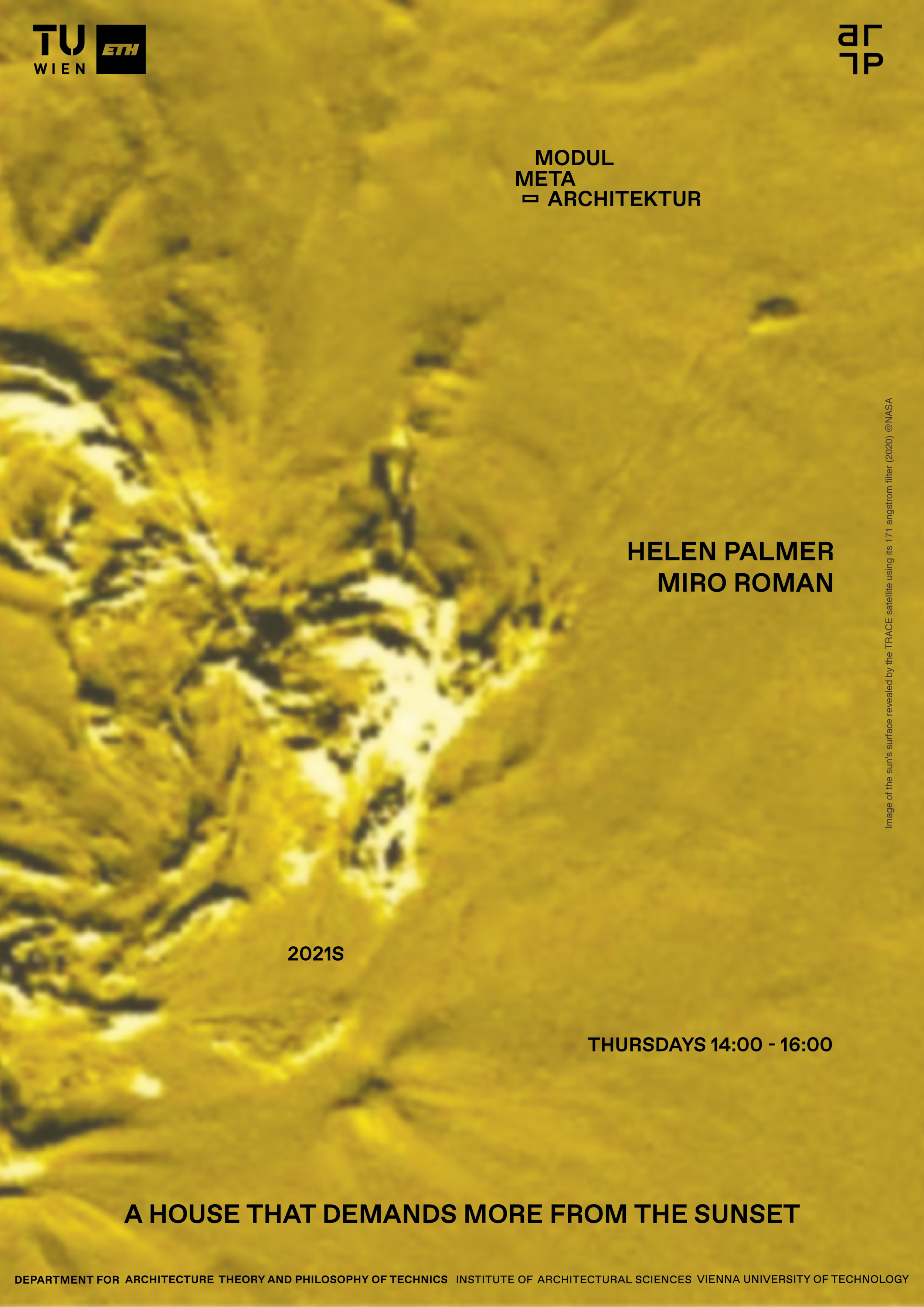After successful completion of the course, students are able to produce a text, create a synthetic persona, mobilise that persona and set it to work in a space: From an ‘elsewhere’ to ‘anywhere’, we can animate spaces and make them talk; we can create a persona.
In the course, we will work with Xenotheka, an online library which is inhabited by an artificial Intelligence called Alice. Here is a videoclip introducing the Xenotheka Environment, by Miro Roman.

If the walls could speak . . . what would they demand?
We use space to create multiple personae, all with different tempers. A million chattering voices.
Avatars, yes, but what could they do?
The inside becomes the outside: the part becomes the whole. One little room becomes an everywhere. The creation of a space that is you.
But how do we get them to talk?
By mobilising multiple personae and setting them to work in a space. By creating an alter-ego from the perspective of an element.
Like Captain Planet?
Air - Earth - Fire - Water. A house characterised by four humours and four elements in balance.
What is a house but a coded balance that shifts?
‘Even Bergsonian duration is in need of a runner’ (Gilles Deleuze and Felix Guattari, What Is Philosophy?).Deleuze and Guattari’s conceptual personae include the Socrates of Plato, the Dionysus of Nietzsche, the Idiot of Nicholas of Cusa. But what if the concept is yourself?
“Perhaps the only difference between me and other people is that I've always demanded more from the sunset. More spectacular colors when the sun hit the horizon. That's perhaps my only sin.”
Joe, Nymphomaniac: Vol. I
A house that demands more from the sunset.
A house is a character.
A house talks through me, while I talk through the house.
A house is reconceived via its library.
Setting: Me, House and the Library
If the walls could speak . . . what would they demand?
We use space to create multiple personae, all with different tempers. A million chattering voices.
Avatars, yes, but what could they do?
The inside becomes the outside: the part becomes the whole. One little room becomes an everywhere. The creation of a space that is you.
But how do we get them to talk?
By mobilising multiple personae and setting them to work in a space. By creating an alter-ego from the perspective of an element.
Like Captain Planet?
Air - Earth - Fire - Water. A house characterised by four humours and four elements in balance.
What is a house but a coded balance that shifts?
‘Even Bergsonian duration is in need of a runner’ (Gilles Deleuze and Felix Guattari, What Is Philosophy?). Deleuze and Guattari’s conceptual personae include the Socrates of Plato, the Dionysus of Nietzsche, the Idiot of Nicholas of Cusa. But what if the concept is yourself?
In this course you will select a building and create a persona that both is and is not yourself. Through writing a text, you will mobilise that persona and set it to work in a space.
From an ‘elsewhere’ to ‘anywhere’, we can animate spaces and make them talk; we can create a persona.
Excercise
0. Sunset
1. Me and the House
2. Synthetic Scale
3. Question to the Sun
4. Talk with the Library
5. Calibration: augmentation
6. Text: homonym/heteronym
7. Calibration: synaesthesia
8. Text: form and process: labyrinth
9. Text
10. Text
11. Text
12. Performance
Indexes
Braidotti, R. ‘Intensive Genre and the Demise of Gender’, Angelaki 13:2 (2008)
Burrows, D. and O’Sullivan, S. Fictioning: The Myth-Functions of Contemporary Art and Philosophy (2019)
Deleuze, G. The Fold: Leibniz and the Baroque (1988)
Deleuze, G. and F. Guattari What Is Philosophy? (1990)
Donne, J. Selected Poems (2011)
Eshun, K. More Brilliant than the Sun: Adventures in Sonic Fiction (1998)
Foucault, M. The Order of Things (1966)
Gatens, M. ‘Cloud-Borne Angels, Prophets and the Old Woman’s Flower-Pot: Reading George Eliot’s Realism alongside Spinoza’s “beings of the imagination”’, Australian Literary Studies 28:3 (2013)
Koolhaas, R. Delirious New York: A Retroactive Manifesto for Manhattan (1978)
Palmer, H. A Field of Heteronyms and Homonyms: New Materialism, Speculative Fabulation and Wor(l)ding’, New Directions in Literature and Philosophy ed. Askin, Beckman and Rivkin (2019)
Haraway, D. Staying with the Trouble: Making Kin in the Chthulucene (2016)
Soupault, P. Last Nights of Paris (1928)
Woolf, V. To the Lighthouse (1927)